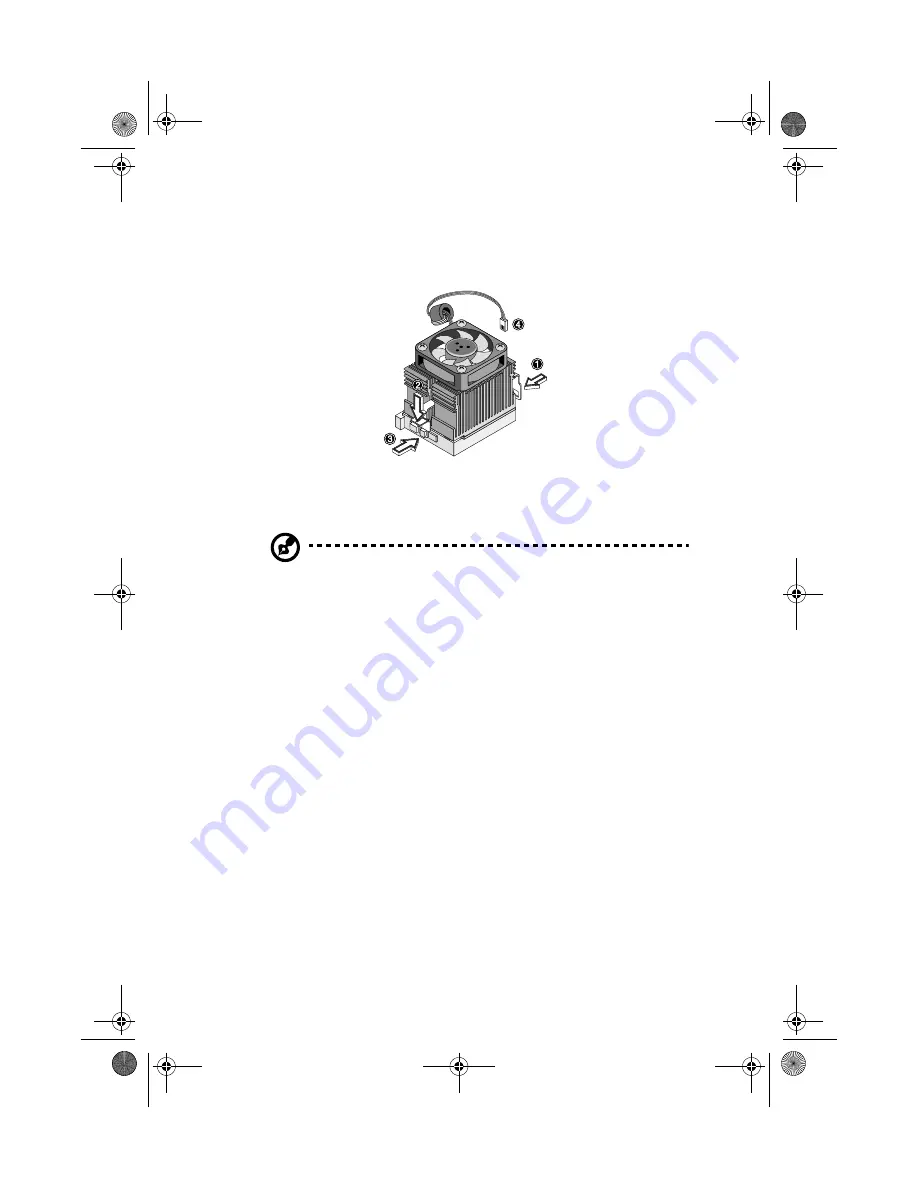
51
6
Attach one side of the fan/heatsink metal bracket to the CPU
socket and then gently push down the other side of the metal
bracket until it locks in place.
7
Connect the 3-pin and 2-pin fan/heatsink cables to the system
board. Refer to “Mainboard” on page 45 for the location of the
fan/heatsink connectors.
Note:
The heatsink becomes very hot when the system is on.
NEVER touch the heatsink with any metal or with your hands.
8
Reinstall the housing cover as instructed on page 43.
APSC-ug-en.book Page 51 Friday, October 5, 2001 9:39 AM
Summary of Contents for AcerPower Sc
Page 1: ...AcerPower SC User s guide APSC ug en book Page i Friday October 5 2001 9 39 AM ...
Page 8: ...viii APSC ug en book Page viii Friday October 5 2001 9 39 AM ...
Page 11: ...1 Overview APSC ug en book Page 1 Friday October 5 2001 9 39 AM ...
Page 16: ...1 Overview 6 APSC ug en book Page 6 Friday October 5 2001 9 39 AM ...
Page 17: ...2 System tour APSC ug en book Page 7 Friday October 5 2001 9 39 AM ...
Page 30: ...2 System tour 20 APSC ug en book Page 20 Friday October 5 2001 9 39 AM ...
Page 31: ...3 Setting up your computer APSC ug en book Page 21 Friday October 5 2001 9 39 AM ...
Page 47: ...4 Upgrading your computer APSC ug en book Page 37 Friday October 5 2001 9 39 AM ...
Page 65: ...55 b Pivot the frame toward the housing until the tab clicks into place ...
Page 68: ...4 Upgrading your computer 58 APSC ug en book Page 58 Friday October 5 2001 9 39 AM ...








































